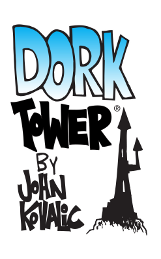Ken and Robin Consume Media: Maestro, Women Write Horror, and Tomes About Grimoires
January 30th, 2024 | Robin

Ken and Robin Consume Media is brought to you by the discriminating and good-looking backers of the Ken and Robin Talk About Stuff Patreon. Each week we provide capsule reviews of the books, movies, TV seasons and more we cram into our hyper-analytical sensoriums. Join the Patreon to help pick the items we’ll talk about in greater depth on a little podcast segment we like to call Tell Me More.
The Pinnacle
The Grimoire Encyclopaedia, Vols. 1 and 2 (Nonfiction, David Rankine, 2023) After a concise history of the pre-grimoire tradition, Rankine provides textual histories and discusses the contents of 99 grimoires, from the Greco-Egyptian magical papyri to a modern (1960) forgery and a sorcerous tome assembled in 2021. (The majority of the works covered do, however, fall into the grimoire mainstream 1250-1850.) This would be enough to make it the best single reference work on grimoires, but Rankine goes further and indexes every spirit (demon, angel, etc), stone or crystal, incense or oil, spell ingredient, plant, metal, or tool mentioned in those 99 grimoires. A staggering work of scholarship, fully accessible to gamers and wannabe warlocks alike.—KH
Recommended
Al Capone’s Beer Wars (Nonfiction, John J. Binder, 2017) Shelves of books retail the legends of Capone and the Chicago mobs, but Binder (as befits a University of Chicago professor) goes back to the documentary record of the 729 “gang-style killings” in Cook County from 1919-1933. On this bed of fact, he lays out essentially a military history of the Beer Wars between Capone’s Outfit and the other 11 bootlegging gangs in the city. It’s not the only book you need on the Chicago gangs, but it’s an essential touchstone, an actual history in a field full of (at best) movie tie-ins.—KH
Godard Mon Amour (Film, France, Michel Hazanavicius, 2017) Amid the political upheavals of late 60s Paris, lauded New Wave director Jean-Luc Godard (Louis Garrel) leans into his worst character traits and strains his new marriage to actress Anne Wiazemsky (Stacy Martin) by reconceiving himself as a Maoist revolutionary. As if narrative cinema itself is taking revenge on Godard for all the mean things he said about it, this satirical drama, based on his ex-spouse’s memoir, thoroughly skewers its protagonist, depicting his turn to radicalism as a profound act of professional and personal self-sabotage. Also known as Redoubtable; the US title strikes a further note of travesty, playing on not a Godard film but one by Resnais.—RDL
Klop: Britain’s Most Ingenious Secret Agent (Nonfiction, Peter Day, 2014) Biography of Jona Ustinov, the Jerusalem born, Russo-Ethiopian who won multiple Iron Crosses fighting for Germany in WWI before becoming a ubiquitous operative, interrogator and analyst for MI5 and MI6 in WWII and the Cold War. Clear narrative is often lost as an overstuffed cast of characters take part in a series of murky incidents—which is to say that Day accurately evokes the world of espionage. Among Ustinov’s detractors was his son Peter, who saw the pain suffered by his mother, the painter and stage designer Nadia Benois, by his insistence on introducing her to his many girlfriends.—RDL
Maestro (Film, US, Bradley Cooper, 2023) Wunderkind conductor/composer Leonard Bernstein (Cooper) meets and weds Broadway actor Felicia Montealegre (Carey Mulligan) leading to a lifelong love complicated by his disinclination to conduct his affairs with men discreetly. Cooper skillfully handles an impressionistic script that evades biopic syndrome by making the marriage the throughline.—RDL
The Man with a Shotgun (Film, Japan, Seijun Suzuki, 1961) Capable hunter () vies for the position of sheriff in a lawless mountain logging town. Betrayals and counter-betrayals keep on coming in a Technicolor, Nikkatsuscope contemporary western.—RDL
Good
Monster, She Wrote: The Women Who Pioneered Horror and Speculative Fiction (Nonfiction, Lisa Kröger and Melanie R. Anderson, 2019) Brief sketches of 40+ female horror writers, plus five contemporary subgenre roundups, provide a decent primer of horror literature from the Gothic to now. Individual author treatments are wildly hit-or-miss, but the book as a whole benefits from its synoptic view and from superb book design by Andie Reid. Official nitpicks: No mention of Silvia Moreno-Garcia? Patricia Highsmith relegated to the “Related Work” section of Daphne du Maurier’s essay, and Mary Wilkins Freeman tossed off in a line? Tchah!—KH
Rich and Strange (Film, UK, Alfred Hitchcock, 1931) When they get an unexpected chance to go on a luxury cruise, a sullen office clerk (Harry Kendall) and his optimistic, underappreciated wife (Joan Barry) are drawn to new romantic partners. Mix of wry social comedy and domestic drama shows the Hitchcock energy outside of the suspense genre.—RDL














